36-2-2 Suzuki trigger implemented 2022-01-16 in VEMS firmware (1 day after trigger specification completed).
[trigger configlet] needs strobing or scoping, adjust tdcdelay and all the usual install stuff.
Syncs and continues to ignite
- Without camsync
- or with factory camwheel (tested with signalgenerator 1 1 2 2 pulses)
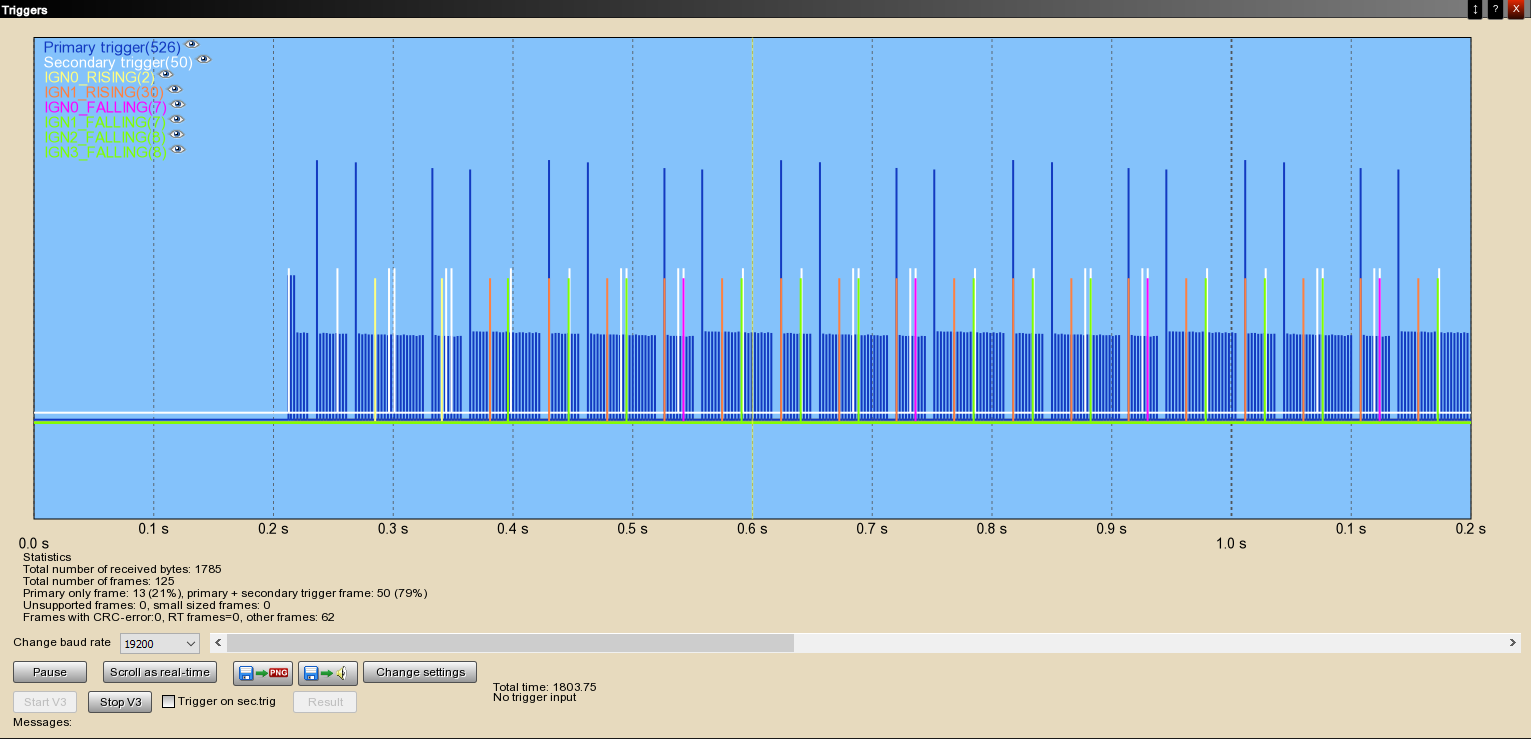
Should be possible to configure also to non-factory 1 pulse camsync (if chosen edge pulse position is not very close to end of missing tooth).
Primary trigger pattern
Suzuki m16 Euro5 engine from 2012 trigger is
36-2-2 (=32 teeth total) :
- 10 teeth and 2 missing
- 22 teeth and 2 missing
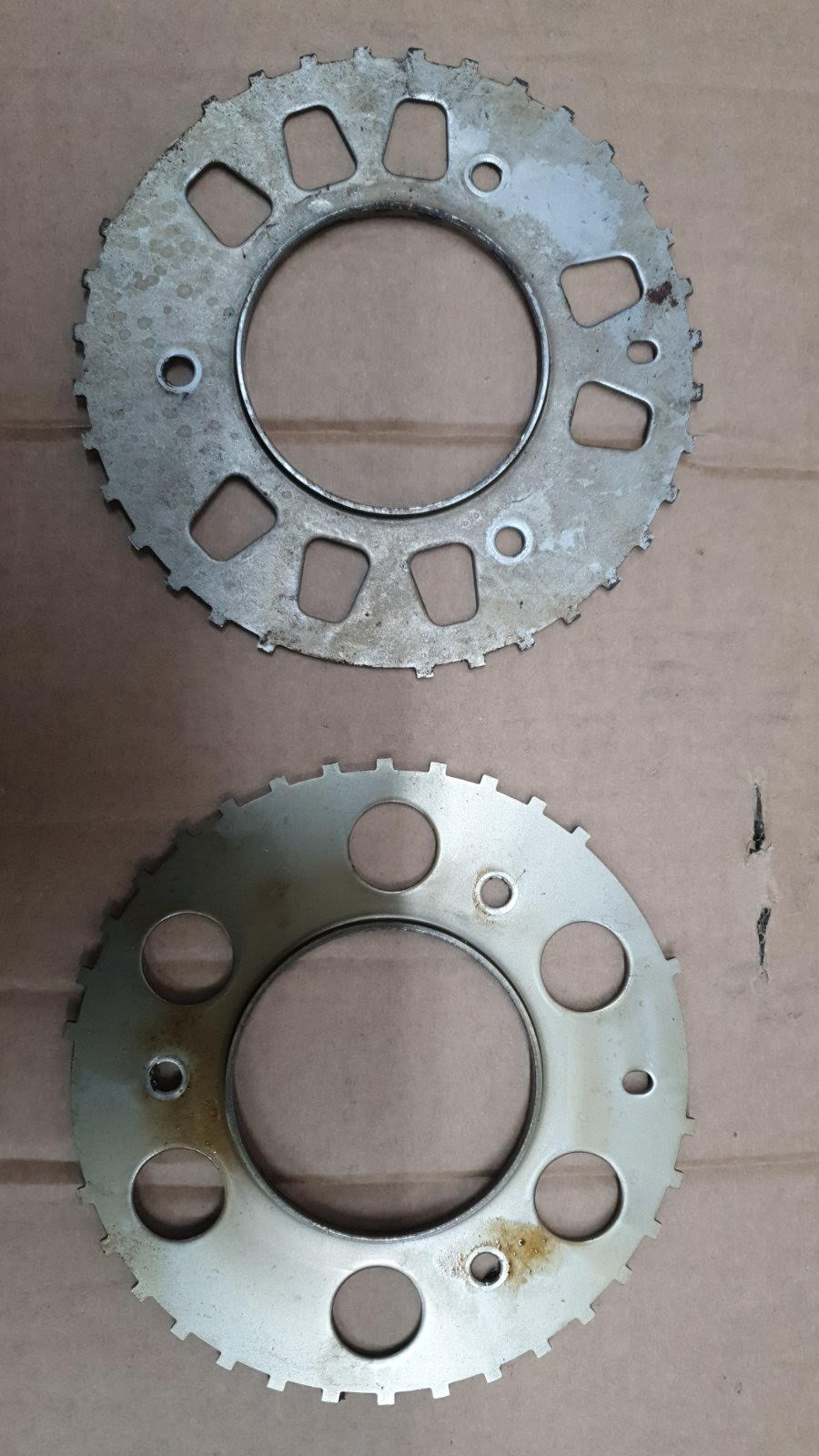
Bottom pic is Euro4 Suzuki 36-2-2-2 , a known existing variant
(already fully supported, configlets available) MembersPage/SuzukiThirtySixMinusTwoMinusTwoMinusTwo
which has
- 13 teeth and 2 missing
- 16 teeth and 2 missing, 1 tooth and 2 missing
That is 30 teeth total, 36-2-2-2 as we usually call.
Mounts on the same crankshaft (orientation fixed by the drill at 3 degree) but it is a LOT of work to replace, (whole engine disassemble work)
TODO: exact details
If the trigger pattern is known exactly by degree, including camsync, it can be implemented
- Numerical degrees, positions
- scopeshot, photo or trigger pattern, and/or reference
- TODO: triggerlog
- '''PLEASE PROVIDE cranking TRIGGERLOG with camsync enabled, falling edge
- (or rather separate triggerlogs, captured with falling and rising edges - burn and reboot between - files named descriptively)'''
Sectrig pattern, 4 groups (90deg = 180 crankdeg) is SAME as 36-2-2-2
- pattern and relative position to primtrig is also important
- 1
- 1
- 2 teeth (extra pulse appr 30 deg before?)
- 2 teeth (extra pulse appr 30 deg before ?)
- the last edge of 2nd teeth seems to be "in sync" with the last edge of 1 pulse
It is possible to grind off teeth from the camwheel.
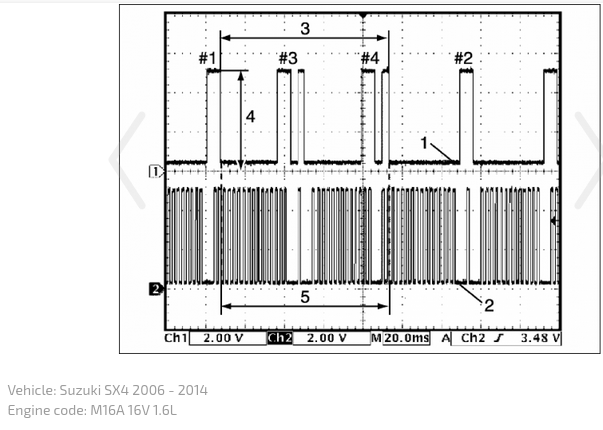
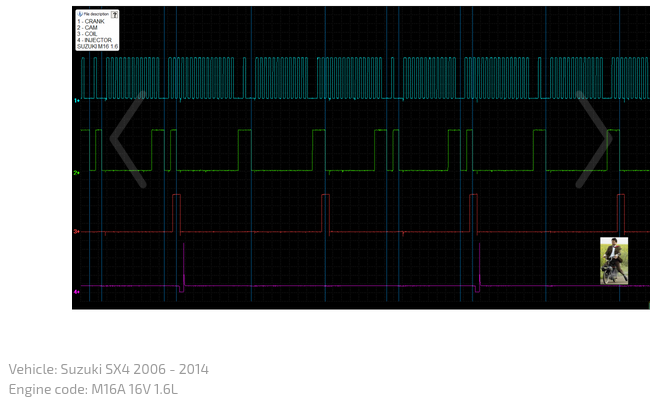
NOTE: camwheel image contradicts "scopeshots" (and drawing) regarding the width of first tooth of the double campulse.
Most likely the sectrig falling edges are inside the tooth-runs (either 1 or 2 falling edges, depending on cam position).
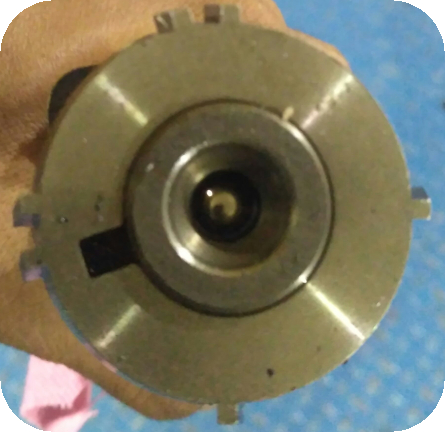
(2022 or newer) Signalgen z342 . please check wav in audacity and compare with your real scopeshots (provide your scopeshots or triggerlogs)
- [signalgen generated z342 wav, camsignal with 12crankdeg offset] - believed to match real signals
- [OLD WAV with 1 pulse camsync] - known to differ from real signal (perhaps close with grinded camwheel)

Check where the double campulse hugs the 36-2-2-2 single missing => it is fully inside the short (10 teeth) run of the 36-2-2 because of the different positions of the primtrig missing tooth.
(Suzuki assumedly changed the crankwheel so that initial syncup at cranking can be a few teeth faster with sophisticated code.)